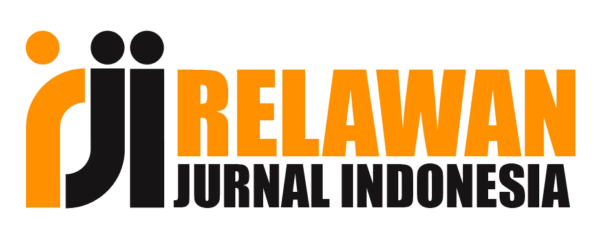Upaya Meningkatkan Penguasaan Konsep Gerak Lurus melalui Penerapan Model Pembelajaran Levels of Inquiry pada Siswa Kelas X IPA 2 Di SMA Negeri 2 Bandung
Abstract
Penelitian ini dilatarbelakangi oleh kurangnya penguasaan konsep siswa pada mata pelajaran fisika yang teramati dari banyaknya siswa yang belum mencapai KKM. Penelitian tindakan kelas dilakukan untuk meningkatkan penguasaan konsep siswa, khususnya pada materi gerak lurus. Model pembelajaran yang digunakan adalah model pembelajaran Levels of Inquiry. Subjek penelitian adalah siswa kelas X IPA 2 dengan jumlah 36 siswa. Data penelitian berupa hasil belajar kognitif yang diperoleh dari tes penguasaan konsep, sedangkan hasil keterlaksanaan model pembelajaran levels of inquiry diperoleh dari lembar observasi. Penelitian dilakukan dalam tiga siklus, dengan topik materi besaran-besaran fisis gerak lurus, gerak lurus berubah beraturan, dan gerak lurus beraturan. Pada tahap prasiklus, ketuntasan hasil belajar kognitif siswa hanya 25,00%, kemudian pada siklus I meningkat menjadi 44,44%, siklus II menjadi 72,22%, dan siklus III menjadi 86,11%. Hasil tersebut menunjukkan bahwa penguasaan konsep siswa mengalami peningkatan setelah diterapkan model pembelajaran levels of inquiry pada materi gerak lurus.
Kata Kunci: Penelitian Tindakan Kelas; Penguasaan Konsep; Gerak Lurus; Levels of inquiry;
ABSTRACT
This research is motivated by a lack of mastery of students' concepts in physics which observed from the number of students who have not yet reached KKM. Classroom action research is conducted to improve the mastery of students' concepts, especially in motion in one dimension material. The learning model used is the Levels of Inquiry learning model. The research subjects were students of class X IPA 2 with 36 students. The research data are cognitive learning results obtained from concept mastery tests, while the results of the implementation of the level of inquiry learning model are obtained from the observation sheet. The research was carried out in three cycles, with topics of material physical movements of straight motion, straight motion changing in an orderly fashion, and regular straight motion. At the pre-cycle stage, the completeness of students' cognitive learning outcomes is only 25.00%, then in the first cycle it increases to 44.44%, the second cycle becomes 72.22%, and the third cycle becomes 86.11%. These results indicate that mastery of student concepts has increased after the implementation of the level of inquiry learning model on motion in one dimension material has been applied.
Keywords: Classroom Action Research; Mastery of Concept; Motion in One Dimension; Levels of Inquiry
Full Text:
PDF (Bahasa Indonesia)References
Achmad, M., Suhandi, A. (2016). Penerapan Model Pembelajaran Levels of Inquiry (LOI) untuk Meningkatkan Literasi Sains Siswa SMA pada Materi Fluida Statis. In Prosiding SNIPS 2016, 506-510.
Putri, I.G., Feranie, S., Karim, S. (2014). PF-05: Optimalisasi Perangkat Pembelajaran menggunakan Model Level of inquiry untuk Meningkatkan OSEAN dan Pemahaman Konsep Siswa pada Pokok Bahasan Fluida Statis (Penelitian Tindakan Kelas di Kelas X MIA SMAN 15 Bandung). In Prosiding Seminar Nasional Fisika (E-Journal) SNF 2014, 3: 32-36. Jakarta: Universitas Negeri Jakarta.
Simbolon, M., Sinaga, P. (2015). Analisis Materi Ajar Fisika yang Digunakan di SMA Berdasarkan Level Penggunaan Multi Representasi dan Pembekalan Keterampilan Pemecahan Masalah. In Seminar Nasiona Fisika (SINAFI) 2015, 114-120. Bandung: Universitas Pendidikan Indonesia.
Sulistiawan, F., Sumardi, K., Berman, E.T. (2017). Penerapan Model Pembelajaran Levels of Inquiry untuk Meningkatkan Hasil Belajar Siswa SMK. Journal of Mechanical Engineering Education, 4(1): 41-47.
Wahyudi, M., Utari, S., Feranie, S. (2017). A Learning Design: Integrating Tracker in Level of Inquiry to Enhance Seven Grade Student Science Process Skills and Graph Interpretation, In 4th ICRIEMS Proceedings 2017, 65-70. Yogyakarta: The Faculty of Mathematics and Natural Sciences Yogyakarta State University.
Wenning, C.J. (2005). Levels of inquiry: Hierarchies of pedagogical practices and inquiry processes. Journal Physics Teacher of Education Online, 2(3), hlm. 3-12.
Wenning, C.J. (2011). The levels of inquiry model of science teaching. Journal Physics Teacher of Education Online, 6(2), hlm. 9-16.
Wenning, C.J. (2011). Levels of inquiry model of science teaching: learning sequences to lessons plans. Journal Physics Teacher of Education Online, 6(2), hlm. 17-20.
Wiriaatmadja, R. (2009). Metode Penelitian Tindakan Kelas. Bandung: Remaja Rosdakarya.
DOI: https://doi.org/10.17509/wapfi.v4i2.20200
Refbacks
- There are currently no refbacks.
Copyright (c) 2019 Dani Ramdani Badruzzaman, Setiya Utari, Saeful Karim, Ratih Sirnawati

This work is licensed under a Creative Commons Attribution-ShareAlike 4.0 International License.
The Journal Wahana Pendidikan Fisika http://ejournal.upi.edu/index.php/WapFi/ is licensed under a Creative Commons Attribution-ShareAlike 4.0 International License
The Journal WaPFi (Wahana Pendidikan Fisika).
All rights reserverd. pISSN 2338-1027 eISSN 2685-4414
Copyright © Faculty of Mathematics and Science Education (FPMIPA) Universitas Pendidikan Indonesia (UPI)










